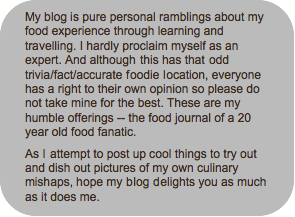
This post isn't just one to celebrate the new year 2008, but is one really dedicated to my mum and her own culinary adventures. The sekihan, also known as osekihan, or Japanese red-cooked festival rice, has been made by mum as well and I proudly present it to you here.
The adzuki bean is the second most important dried pulse in Japan and together with glutinous rice, known as mochi gome, they are the combination of red and white -- colours associated by the Japanese with joyous occasions and celebrations such as weddings and birthdays. In a sense, the sekihan (red-cooked festival rice) is a celebration cake. The glutinous rice is a sticky rice and are very small, rounded grains. This type of rice is also seen in traditional Chinese rice dumplings or ba zhang which has a sad story behind it about a Chinese poet who out of love for his country drowned himself in the sea to escape the corruption brewing within the imperial court. The countrymen who loved him so made dumplings (meat covered in rice and then wrapped in lotus leaves) and threw them into the sea. The dumplings were meant to lure the fish away from eating his body so that he could finally be at peace after death.
For more details on this story, leave me a comment I'll get my dad to retell it :D
Glutinous rice is also seen in lots of desserts like the nonya pulot hitam and little cakes common in Southeast Asia. In Thai cuisine, it is served as a dessert with coconut milk and fresh mango. Mmmm. To many, glutinous rice may be very strange due to its sticky texture which is very much unlike Japanese rice (it is sticky too) and tends to be almost glue-like. However, it absorbs flavours very well and hence, is very adaptable in either a savoury or sweet situation. What a clever grain indeed!
The adzuki bean, might I have you know, is considered very healthy and is used in Chinese herbal medicine as an antidote to stomach upsets and as a laxative! When cooked, it has a subtle sweet taste and aroma and its colour stains the rice to give its well-known purply red colour. Beautiful! One can find the adzuki bean in popular Japanese cakes or snacks like dorayaki or Japanese pancakes as a bean paste filling.
Here's how to make it: (the japanese kitchen by Kimiko Barber)
400g mochi gome (glutinous rice)
110g adzuki beans
pinch of salt
2 tablespoons toasted black sesame seeds
*salt and sesame seeds mixture is known as gomashio
Wash the rice until water runs clear, set aside.
Wash and rinse the beans and put them in a saucepan with water. bring to boil, cook for 5minutes and strain off. Add 850ml water and bring to boil over a low to medium heat. Turn off the heat, cover and leave to stand 10mins.
Transfer the beans to a larger saucepan. Reserve the cooking liquid in a bowl and pour a ladleful of liq from a heigh of 30cm back into the bowl. Repeat with 5 more ladlefuls - it will intensify the redness of the liquid.
Add the rice to the saucepan and pour in 700ml of liq - if there is not enough, add water instead. Cover and add a pinch of salt before placing over heat. Bring to boil and cook for 5mins, turn off heat and don't lift the lid until it has steamed for 15mins more.
Stir and serve with gomashio.
It is usually eaten after cooked but can also be served at room temperature.Print Page
Wednesday, 2 January 2008
Celebratory Sekihan
posted by
diva
à
6:53 am
Subscribe to:
Post Comments (Atom)




1 comment:
hello and happy new year! i've added you to the list if you don't mind. lovely blog you have, i look forward to reading your future posts.
Post a Comment